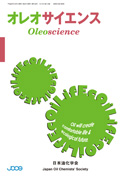
- |<
- <
- 1
- >
- >|
-
Tohru KAMO2020Volume 20Issue 10 Pages 451-458
Published: 2020
Released on J-STAGE: October 07, 2020
JOURNAL FREE ACCESSDue to superior property as a material, production of plastic has expanded dramatically since the second half of the 20th century, and it being manufactured worldwide more than 400 million tons. In a world where infectious diseases are rampant, inexpensive and lightweight plastics can play an important role in bringing clean water and medical supplies to people in developing countries and poor communities. On the other hand, some illegally dumped waste plastic has been spilled into the ocean, causing serious damage to marine ecosystems, and potentially affecting human health. Waste plastics have come to be one of the key environmental issues.
For the recycling of waste plastics, it is desirable to select the most appropriate method from mechanical recycling, feedstock recycling, and energy recovery, taking into account the quality and quantity of the object. At present, plastics are mainly manufactured from fossil resources, but in the future, renewable resources will be the main raw material. To minimize the amount of precious organic resources introduced into the market, recycling of waste plastics should be promoted. In the world the SDGs aiming, good price and high quality are not enough, but also environmental protection, and ethics considering for biodiversity or human right are important.
View full abstractDownload PDF (1363K) -
Noriaki USHIO2020Volume 20Issue 10 Pages 459-465
Published: 2020
Released on J-STAGE: October 07, 2020
JOURNAL FREE ACCESSTo depict "Fukushima's future for the realization of SDGs," it is necessary to proceed with the decommissioning of the Fukushima Daiichi Nuclear Power Plant (1F) without delay. We are developing "the insoluble neutron absorbers" for the purpose of preventing recriticality of fuel debris as one of the 1F decommissioning technologies. By applying worm-like micelles, we were able to spread the slurry carrying boron carbide, which is a neutron absorber, on the simulated fuel debris in water. We evaluated the radiation resistance of worm-like micelles and found the possibility of application in the primary containment vessel. We have also confirmed the ability to absorb neutrons, and it is expected that this technology will have an effect in preventing recriticality of fuel debris. Unexpected technology is needed for the reconstruction of Fukushima, and I think that there is a technology that Japan Oil Chemists' Society can contribute to in the future.
View full abstractDownload PDF (1534K)
-
[in Japanese]2020Volume 20Issue 10 Pages 476-480
Published: 2020
Released on J-STAGE: October 07, 2020
JOURNAL FREE ACCESSDownload PDF (2408K)
- |<
- <
- 1
- >
- >|